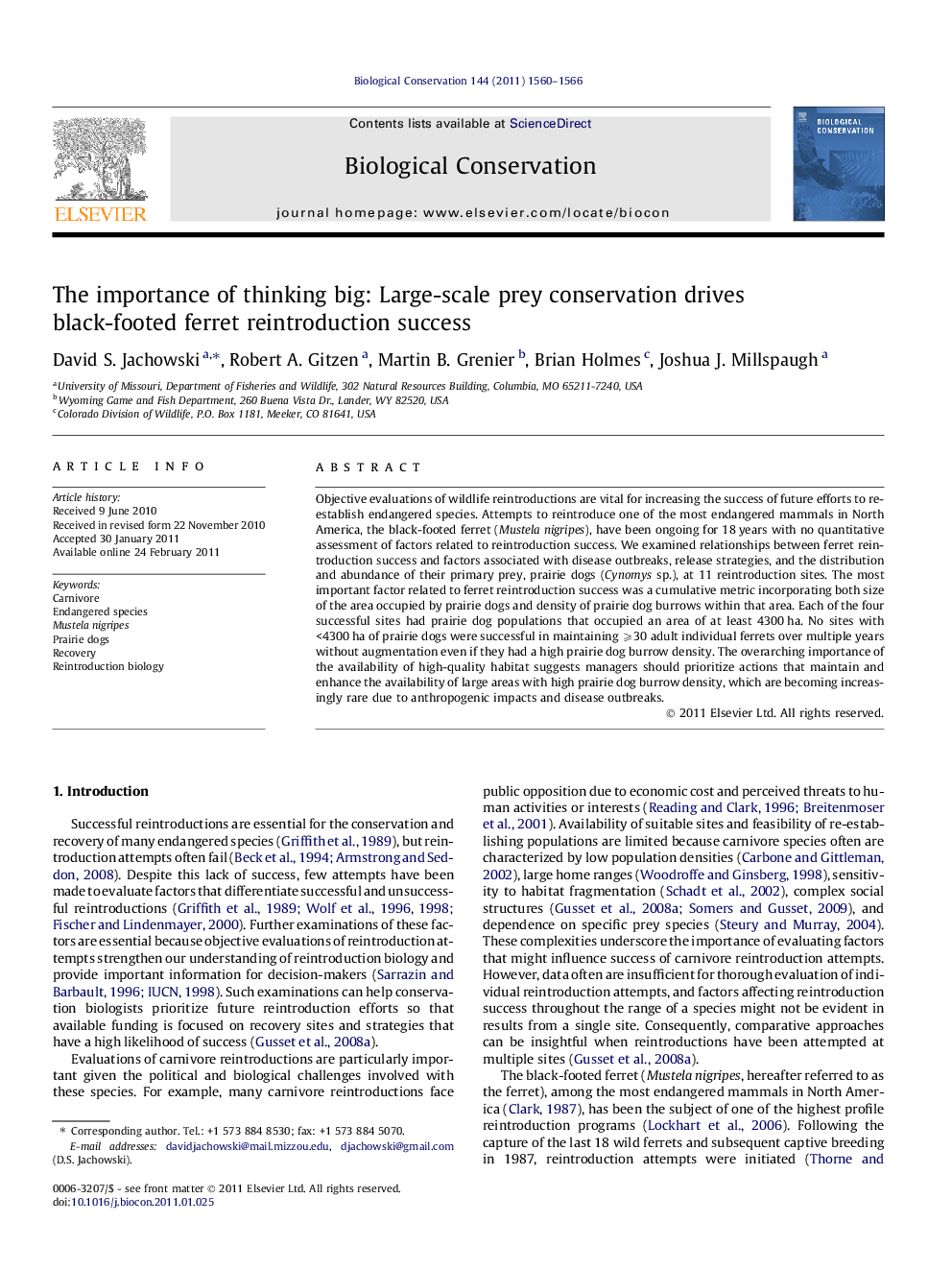| Article ID | Journal | Published Year | Pages | File Type |
|---|---|---|---|---|
| 4386003 | Biological Conservation | 2011 | 7 Pages |
Objective evaluations of wildlife reintroductions are vital for increasing the success of future efforts to re-establish endangered species. Attempts to reintroduce one of the most endangered mammals in North America, the black-footed ferret (Mustela nigripes), have been ongoing for 18 years with no quantitative assessment of factors related to reintroduction success. We examined relationships between ferret reintroduction success and factors associated with disease outbreaks, release strategies, and the distribution and abundance of their primary prey, prairie dogs (Cynomys sp.), at 11 reintroduction sites. The most important factor related to ferret reintroduction success was a cumulative metric incorporating both size of the area occupied by prairie dogs and density of prairie dog burrows within that area. Each of the four successful sites had prairie dog populations that occupied an area of at least 4300 ha. No sites with <4300 ha of prairie dogs were successful in maintaining ⩾30 adult individual ferrets over multiple years without augmentation even if they had a high prairie dog burrow density. The overarching importance of the availability of high-quality habitat suggests managers should prioritize actions that maintain and enhance the availability of large areas with high prairie dog burrow density, which are becoming increasingly rare due to anthropogenic impacts and disease outbreaks.
